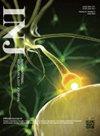Dynamics in Neurourology.
IF 1.8
3区 医学
Q3 UROLOGY & NEPHROLOGY
引用次数: 1
Abstract
Copyright © 2023 Korean Continence Society This is an Open Access article distributed under the terms of the Creative Commons Attribution Non-Commercial License (http://creativecommons.org/licenses/by-nc/4.0/) which permits unrestricted non-commercial use, distribution, and reproduction in any medium, provided the original work is properly cited. We currently find ourselves in an era of ceaseless transformations, propelled by breakthrough technologies such as artificial intelligence (AI) and the metaverse. These advancements are not limited to mainstream sectors—they are also taking root in the realm of neurourology, with many researchers dedicating their efforts to leverage these innovative technologies to improve research outcomes. In light of this ongoing shift, we have curated this special issue under the theme of “Dynamics in Neurourology.” Here, “dynamics” encompasses three distinct yet interrelated areas: (1) medical device development and clinical practice, (2) AI applications, and (3) the role of the metaverse. In this issue, we present three papers focusing on medical device advancements. First, Lee et al. [1] investigated the effectiveness of a new, non-invasive disposable vaginal device for female stress urinary incontinence and its impact on quality of life. By assessing the efficiency of this innovative device, the authors were able to report on its clinical efficacy and practical feasibility. Second, Kim and Chung [2] proposed a novel technology to refine the Foley catheter insertion procedure via the development of a unique Foley catheter introducer. Finally, Kang et al. [3] explored the inventive use of near-infrared spectroscopy to monitor urine volume in patients with neurogenic bladder. They validated the efficiency of a wearable bladder patch that tracks urine volume in these patients. These 3 studies on medical devices represent pioneering efforts in surgical and management techniques aimed at enhancing patient treatment within the field. Next, the issue contains 2 studies focusing on AI applications. Choi et al. [4] reported on the application of an AI technology known as “transfer learning” that aids in efficient stone detection in patients suffering from urolithiasis. The authors carried out a verification process for this AI technology, affirming its ability to detect urolithiasis with a high degree of accuracy and confirming its viability for use within the medical field. In the second study, Cho and Youn [5] undertook a comprehensive review of current studies on AI technologies and emerging treatment alternatives to diagnose key conditions like interstitial cystitis and painful bladder syndrome (IC/PBS). They offered suggestions for diagnosis, treatment, prognosis, and prediction methodologies for patients. Both of these studies collectively help estimate the practical applicability and efficacy of AI technologies within the realm of neurourology. Finally, turning our attention to the metaverse’s role in neurourology, Kim and Kim [6] reported on evolving trends in digital therapeutics in urology and suggested potential trajectories for metaverse applications. This study reveals that the utilization of the metaverse within the medical sector is currently broadening, extending beyond clinical education to encompass areas such as diagnosis, consultation, and treatment assistance. The term “dynamics” refers to an object that changes over time. Given the application of various cutting-edge technologies in the medical field, “dynamics” in neurourology is perceived as a theme capable of driving transformation and fostering innovative research results through collaborative efforts with existing clinical research. This is indispensable for enhancing patients’ quality of life, and signifies an era that will require a variety of trials to validate cutting-edge technology applications. To keep up with these changes, we eagerly anticipate dynamic research trends in the field of neurourology. Editorial神经病学动力学。
本文章由计算机程序翻译,如有差异,请以英文原文为准。
求助全文
约1分钟内获得全文
求助全文
来源期刊

International Neurourology Journal
UROLOGY & NEPHROLOGY-
CiteScore
4.40
自引率
21.70%
发文量
41
审稿时长
4 weeks
期刊介绍:
The International Neurourology Journal (Int Neurourol J, INJ) is a quarterly international journal that publishes high-quality research papers that provide the most significant and promising achievements in the fields of clinical neurourology and fundamental science. Specifically, fundamental science includes the most influential research papers from all fields of science and technology, revolutionizing what physicians and researchers practicing the art of neurourology worldwide know. Thus, we welcome valuable basic research articles to introduce cutting-edge translational research of fundamental sciences to clinical neurourology. In the editorials, urologists will present their perspectives on these articles. The original mission statement of the INJ was published on October 12, 1997.
INJ provides authors a fast review of their work and makes a decision in an average of three to four weeks of receiving submissions. If accepted, articles are posted online in fully citable form. Supplementary issues will be published interim to quarterlies, as necessary, to fully allow berth to accept and publish relevant articles.
 求助内容:
求助内容: 应助结果提醒方式:
应助结果提醒方式:


